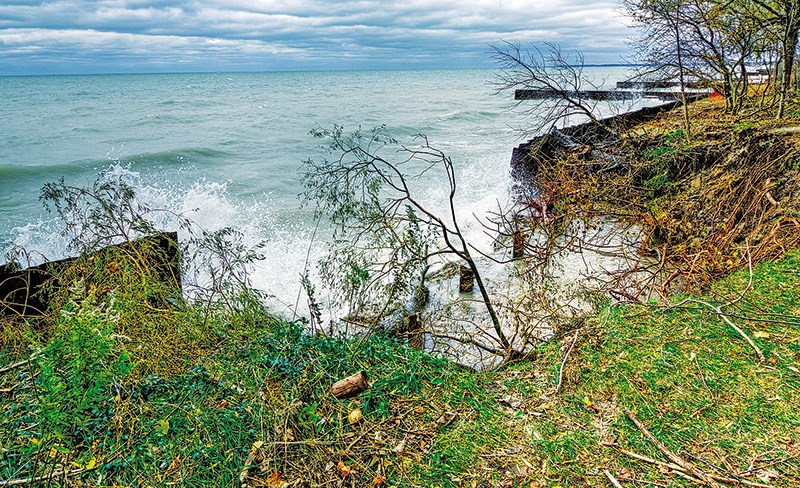George Mathewson
The wicked storm that spoiled Halloween for so many trick or treaters on Oct. 31 also did a number on Sarnia’s lakefront.
Monstrous waves scrolled farther inland than normal, uprooted and hauled off trees and took away decking planks, lawn chairs and at least one kayak, residents report.
A 40-foot section of seawall near the Cull Drain Bridge failed, eating into the public right-of-way and complicating the already complicated removal of the bridge.
In fact, many of the steel groynes built to protect the city from the lake’s fury between Rainbow Cove and Perch Creek in Bright’s Grove took a beating that night, and in some cases sections collapsed and disappeared.
Lake Huron is, most of the time, a sleeping giant. But when roused it can gnaw on the city’s northern flank like a beast on a bone.
The infamous storm of 1913 that sank and damaged dozens of ships swallowed up vast acres of city farmland. And it was just one of many storms.
Resident Dan Moore, whose family once farmed the land at Moore’s Lane in the Grove, told me earlier this year how his grandfather once grew crops north of Old Lakeshore Road, land that is now under water.
Even in his father’s time enough ground remained for kids to play baseball north of the road, he said.
A storm in 1973 stripped away more of the shore north of Old Lakeshore, as well as portions of the roadbed itself.
If the advancing lake hadn’t got the attention of Sarnians before then, it did that day.
Once a “new” Lakeshore Road was built inland, local government and private landowners laid down a defence of concrete riprap, seawalls, wire gabion baskets filled with rocks and steel groynes to protect what was left.
For years now, Great Lakes water levels have been low, creating a sense of security. But they aren’t low any more and are continuing to rise.
Huron is currently above average, and also above Chart Datum, the level at which nautical depths are recorded on maps.
With higher water comes higher risk, as the Halloween storm reminds us.
City engineer Andre Morin raised a red flag last week when he warned city councillors that Sarnia’s defensive bulwark is weak and in need of repair.
Given the recent damage, the city needs to prioritize its shoreline budget, he said, or be at risk of losing even more land to the lake.
“This really brought to light the poor state of the seawall along our shoreline,” he said.
